Cuya 200k, 124m***
(Note: there is no update for 11/19. We stayed in Iquique for two nights.)
Iquique is wedged between the coastal mountain range and Pacific. It is the same topography as the rest of the coast riding up from Tocopilla, except that maybe it is a little wider, has a little better beaches, and a little better access to water. Iquique is one of the best places we’ve been on the trip, so we spent 2 nights here.
The bike climb out is very challenging. We did the first 25k/15m, a 3,500 foot climb yesterday, then took our bikes into a little shop for cleaning and tuning. Here are some pictures of us leaving town and that climb yesterday.
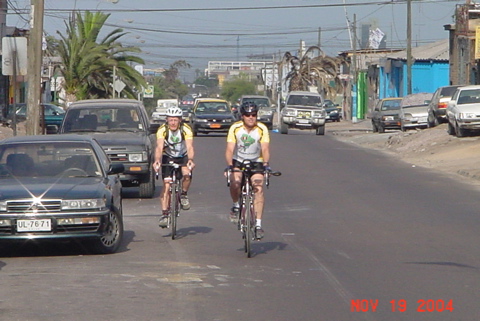
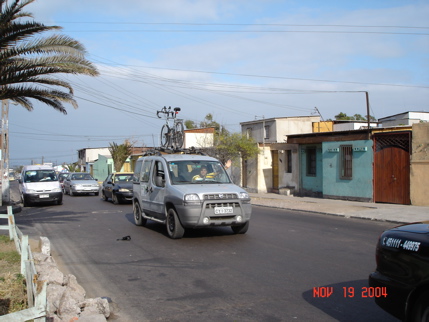
This road east out of Iquique had more shrine to dead people per kilometer than any other place we have seen. Some were like crypts. Others were highly decorative.
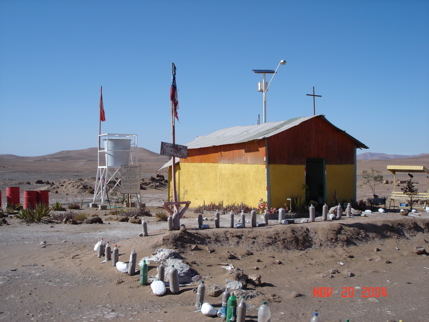
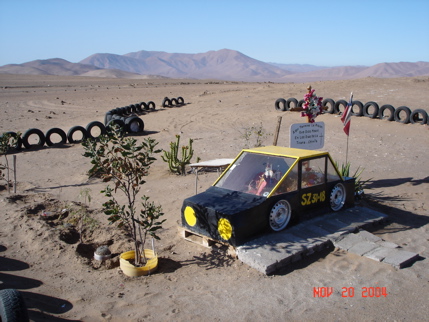
On the way up I got a flat that literally made a popping sound. We quickly changed wheels and proceeded to the psuedo-top, where ‘airsports’ is a big activity.
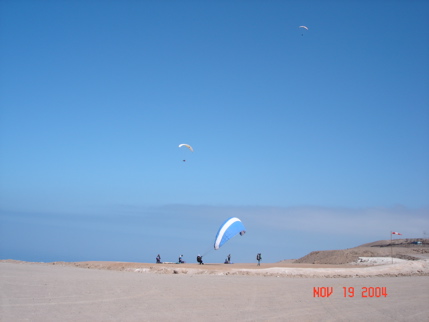
It looks beautiful. The flyers take their equipment up by bus, get off here and fly back down to Iquique. We drove back. I got my hair cut, did two updates. We all rested, had a great dinner at the historic Wagon Restaurant and slept well.
The next morning, on our usual 7:30a breakfast, 8a departure schedule we left the Holiday Inn Express on the ocean and Eduardo took us back to our end point yesterday. From there it was another 22k/13m to the Chile Ruta 5, the Pan American Highway. There is another net 800 feet of ascent in this stretch of road, but with the ups and downs more than that. Then you’re up on the Pampa del Tamarugal – still part of the limitless, dry Atacama desert.
At the T intersection of this road that leads from Iquique to the PanAmerican Highway there are a couple of signs listing tourist attractions in the area.
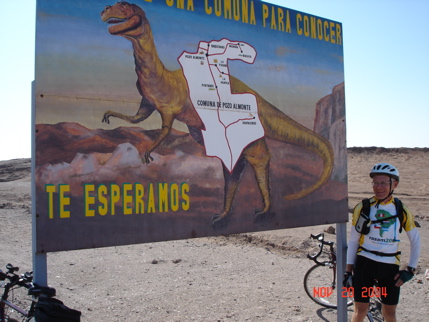
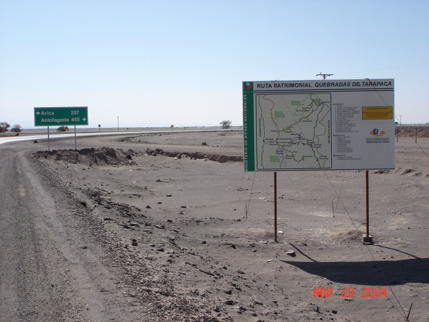
The scenery is like the Nularbor in Australia – unchanging, flat desert. 48 miles into the day we came to Huaya where the “Giant of the Atacama”, an ancient geoglyph. We checked it out.
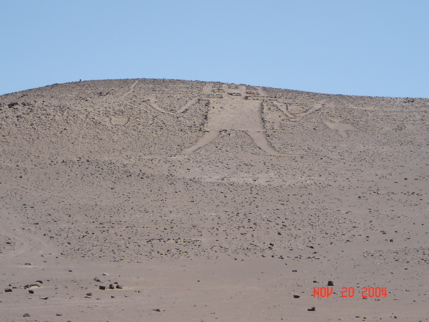
We do not have a guidebook for Chile, or I would provide more details, but this is not that GIANT. Nonetheless, these desert sculptures (you work with what you have) are thousands of years old and fascinating.
We also rode past Fort Delores, a famous site in the War of the Pacific (1879-83).
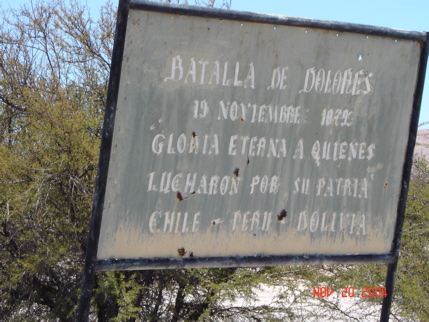
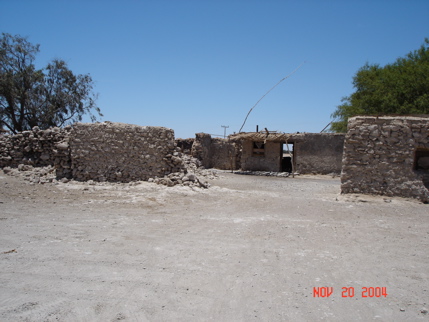
It is mostly just a large complex of broken down adobe walls now, but in 1879 lots of people died here. Peru teamed up with Bolivia to try to take the nitrate fields in the northern Atacama (we fight for oil now) from Chile. Chile won, occupied Lima for 3 years and took away Bolivia’s access to the ocean. Now the signs are non-nationalistic. They talk of the war and battle, but not who fought who for what or who won.
The PanAm does not head straight north here. There are a few giant canyons, some with green living stuff in them, in the way. The road does a few mile diversion (for us a quick downhill and long climb back up) when it reaches them.
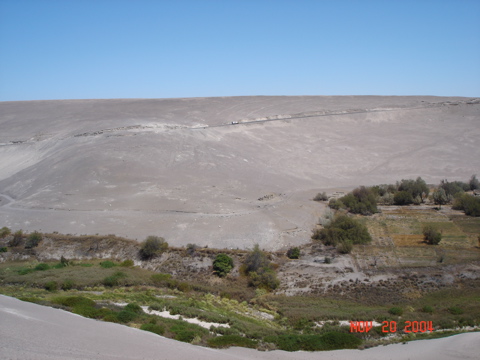
That´s a semi coming down the other side…
Then we came to the massive southern canyon that leads to Cuya. Another 25 mile, 4,100 foot downhill to the ocean on bad roads in gusty, strong winds. Here is view from the top and another of the geoglyphs Eduardo photographed on the way down.
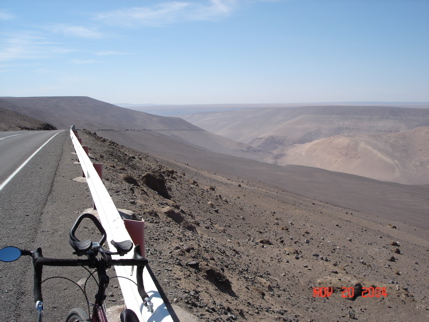
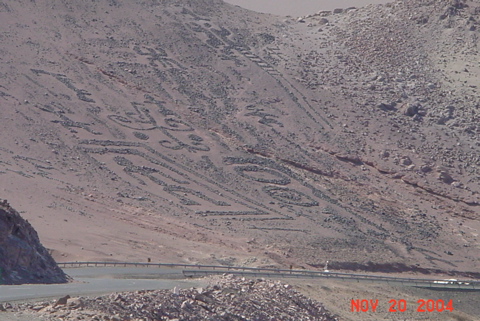
These canyons really hurt. For each foot/mile down that takes only seconds, there are matching ones on the other side that take minutes. At the bottom of this it was so windy we could manage only 5mph. I took a QuickTime video to catch the sound and wind, but there is no way to share it with you on these slow baud rate connections.
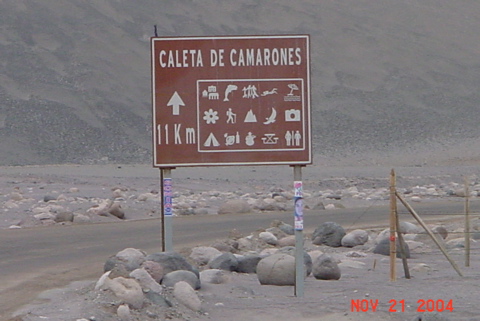
At the bottom, by Cuya, there was this sign to the beach of the shrimp which promised everything but fine dining. At the end of the dirt road, there was nothing more than a large, empty, beautiful beach, just for us.
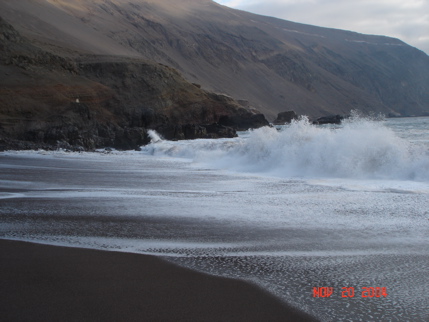
We got out our stuff, set up our tent and table, and prepared the food.
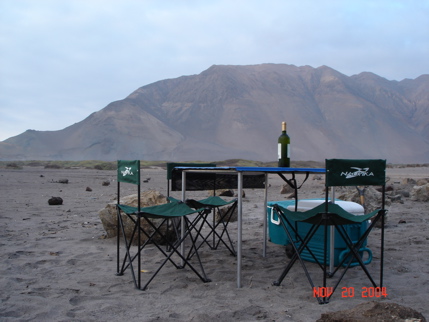
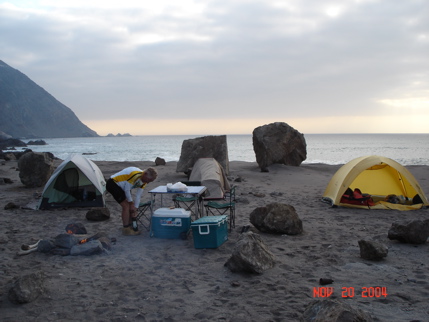
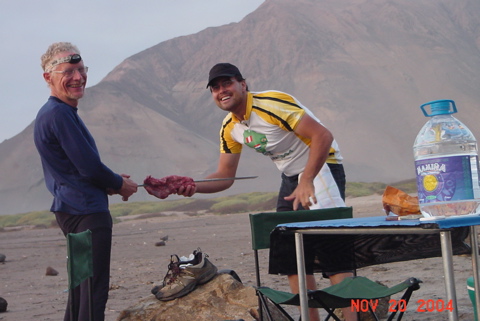
This night camping on the Pacific is wonderful. Thunderous waves, seabirds, great scenery – all in splendid isolation. Eduardo does Brazilian grilled meat and onions that rival the finest food anywhere. We have our supply of wine. At the end of the day we do a slideshow and watch the sunset (from my tent window).
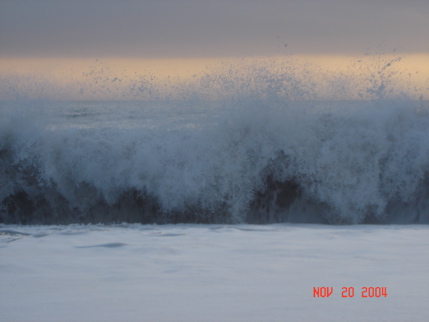
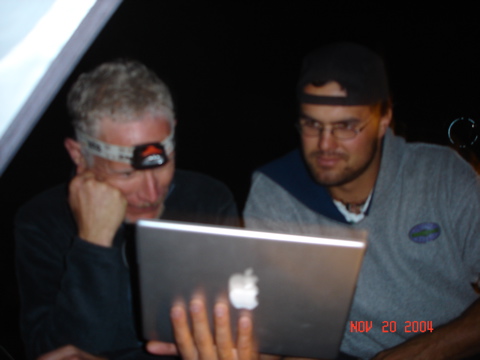
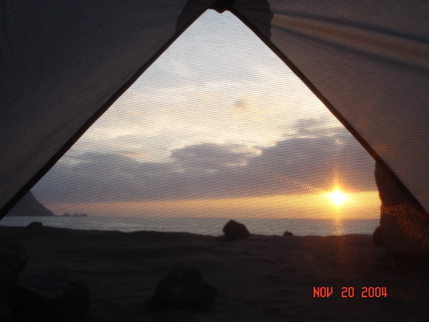
We are exhausted, have no internet, and tomorrow we have a huge climb out of here, but for now it seems to be more than worth it.

 November 19, 2004
November 19, 2004 